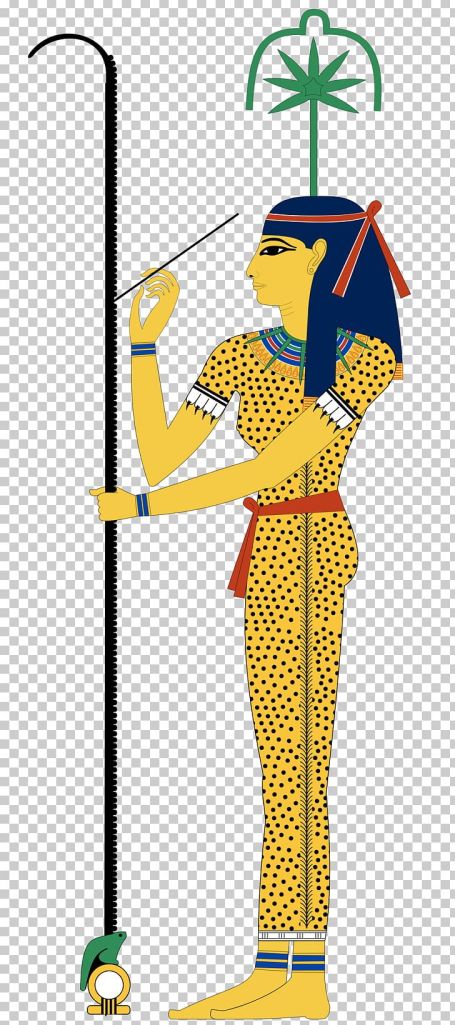
A society which fails to acknowledge the realm of the gods, a society in which the elites in power seize divine blessings for themselves alone, is a society that dishonors the goddess Seshat and embarks instead upon the disastrous path of King Midas.
You recall that everything Midas touched turned to gold, a wish granted to Midas by Dionysus. This unfortunately included his daughter. King Midas was a master of bad judgement obsessed with the trappings of wealth and power.
Virtually all the ancient myths and sacred stories from cultures worldover are based on celestial metaphor calling attention to this fundamental truth: we exist in both a material and a spiritual universe. Both components – the seen and the unseen – must be maintained in harmonious balance lest serious troubles ensue.
The level of reductionist materialism – the view that only matter is real – is now perhaps at its highest in recorded history. In fact, I am comfortable asserting that the last time the world found itself in a similar state of godlessness and shameful decadence, dystopian Atlantis was on the eve of its fatal destruction some 11,600 years ago.
In ancient Egypt some 3,000 years ago, around the time of the First Dynasty, Seshat was tasked with properly aligning all newly constructed temples and monuments, thereby maintaining Earthly harmony with the Spiritual Realm – the Realm of the Gods. We know, for example, the Giza plateau aligns with the three stars of Orion’s belt and that the Great Sphinx itself, which was built several thousands of years before the Great Pyramid, aligns with the constellation Leo the lion. At sunrises in 10,500 B.C. the Sphinx stared directly at Leo. These celestial alignments are paramount to appreciating the gods and goddesses of Ancient Egypt.

Seshat was also:
- The keeper of historical records and accounts
- Guardian of the sacred hieroglyphics
- The Goddess of Knowledge and Wisdom
- Female Scribe and inventor of writing
- Goddess of passing time, the lunar cycle and the movement of the stars
- The goddess of mathematics, astronomy and architecture
- Mistress of the House of Books
- The Lady of Builders
- She who opens the doors of heaven for you

Seshat is a moon goddess, which possibly explains why she is not as well known today as one might expect and also why no Egyptian temples or cults were dedicated to her. Most Mother Goddesses and archetypes of the Divine Feminine are reflective, unassuming and forgo the limelight. Seshat, for example, defers to Thoth, who at various stages in Egyptian history was diminishly known as her husband, father, consort or scribe.
Regardless, Thoth, a moon god, was Seshat’s male counterpart. In Chrysalis Tarot readings, it would be appropriate to associate Seshat with our Moon card, a symbol of nocturnal yin energy, and to use the Moon card to invoke her divine assistance.
Regarding Seshat’s symbology, the seven pointed object in her headdress is not a “seven pointed star,” as is often incorrectly assumed. Instead, it symbolizes celestial alignments, i.e. sunrises, sunsets, etc. The number 7 in this case symbolizes the Seven Heavenly Spheres visible to the naked eye: Sun, Moon, Mercury, Venus, Mars, Jupiter and Saturn. Seshat is depicted (top) cutting notches in a palm reed to symbolize some particular pharoah’s allotted time on Earth. Her leopard skin garment indicates she’s a High Priestess.
Interestingly, only exalted priests and priestesses who had defeated the evil god Set were permitted to wear leopard skin robes. This is why I refer to Seshat as goddess and protectoress for our troubled times. It is she who eventually will realign Heaven with Earth and thus restore cosmic harmony. Seshat exhorts us to align ourselves and our societies with the patterns of the divine realm. One commentator noted, “Everything about Seshat symbolizes the vital task of integrating, harmonizing and “tying together” the divine realm and the material realm.”
An excellent book on this subject is “Serpent in the Sky: The High Wisdom of Ancient Egypt” by John Anthony West.
© Toney Brooks, 2022
